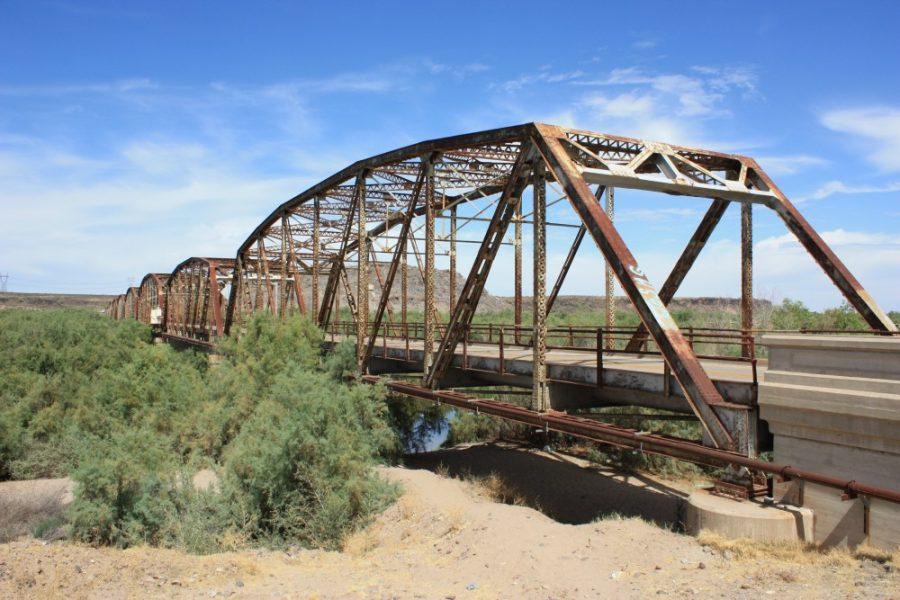Once the heart of American consensus, infrastructure bills have been wrought with controversy and political infighting. This has been at the expense of the American citizen, who relies on the nation’s roads to get to work, piping to provide fresh water and power lines to supply electricity.
Our Infrastructure is in desperate need of renovation and focus. Ignoring these problems will only make them more dangerous.
A recent American Society of Civil Engineers (ASCE) infrastructure report card gave the United States a “D+” and said that, in order to match the growing demand for better and more efficient roads, almost $206 billion in funding would need to be added by Congress every year.
Annual American investment in this field pales in comparison to worldwide spending. An article put out by the Brookings research group placed our funding next to the worldwide averages and wrote, “(Infrastructure Funding) accounts for about 2.5 percent of the economy, compared to about 3.9 percent spent in Canada, Australia and South Korea, 5 percent for Europe and 9-12 percent in China.”.
This funding gap is demonstrated in the lack of public transportation in inner cities, a system of bridges and highways that go decades without upkeep, and continued congestion in large cities.
But why does this matter? It’s easy to give into the argument that increased funding would affect the nation very little and say that our highways and bridges are just fine as they are, but doing so not only pushes the problem further down the road. It costs the average citizen much more than the total cost of renovations would require.
The ASCE estimated that, on average, 42 hours are wasted every year per citizen just by sitting on congested and inefficient roads, a figure that adds up to almost $160 billion in wasted fuel.
More than just wasted gas, a lack of funding pushes out the maintenance of structurally weak and ignored roads and bridges, with the ASCE finding that around 10 percent of bridges nationwide are unsafe or improperly maintained. That number jumps up when individual states are inspected, with almost a quarter of Rhode Island’s bridges being declared structurally deficient, a number that is as shocking as it is dangerous.
RELATED: Opinion: Fear mongering shouldn’t dominate politics
If 10 percent of bridges lacking proper upkeep was terrifying, the ASCE also wrote that “20 percent of the nation’s highways had poor pavement conditions in 2014. Urban roads are in far worse shape than rural roads due to greater volumes of traffic; 32 percent of urban roads are in poor condition, compared to 14 percent of rural roads.” This is showing just how widespread this crisis is, from highways to roads to bridges all around the country.
Furthermore, Robert Puentes of Brookings described the influence of infrastructure on the nation’s economy, saying, “It also amplifies the importance of our seaports, air hubs, freight rail, border crossings and truck routes, which move $51 billion worth of goods quickly and efficiently each day in the complex supply chains of the modern economy.” He added that ignoring this massive organ of world trade, the United States economy, as well as the economies of our neighbors and trade partners, would suffer unless something is done.
How did this happen? In the 1950s, billions of dollars were poured across the nation to establish the nascent highway systems that tie this country together from one ocean to the other. But in the years following that massive public works project, funding has decelerated.
Using a chart put out by Jeff Davis, a senior fellow of Eno Center for Transportation, you can see that after a peak in 1965, funding as a percentage of the total GDP of the country has stayed around the same, meaning that we have been matching funding to population growth. This means the percentage we have established as the desired amount is far too small to match the growing need for urban redevelopment and infrastructure reform.
By focusing funding on fixing the leaks that threaten to break our entire transport system, the federal government could encourage state governments to do the same. Money being poured into local economies would boost townships and counties that stand to gain from better road conditions.
RELATED: Protests crucial to politics, divisive without empathy
As the Congressional Budget Office wrote concerning potential federal investment in infrastructure reform: “Spending on physical capital facilitates commerce, spending on education helps develop a skilled workforce and spending on R&D promotes innovation.” This shows there is more to gain than the obvious benefits of better, expanded roads and transportation speeds and efficiency. It also encourages innovation in the form of funding for research and development, promotes job training and specialization and helps the flow of the economy by investing in local and national business.
Today, the United States stands at a crossroads, with the option to step up to the plate and fulfill the promises it made to the American people when they built our now decaying roads and bridges or shy away from their responsibilities and hurt those who count on them the most. Even in this age of division, I feel that the choice is a natural one.
Follow Alec Scott on Twitter









